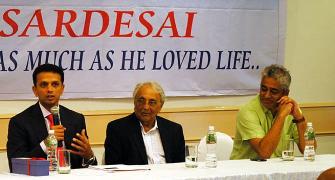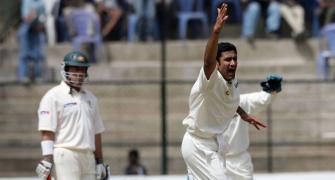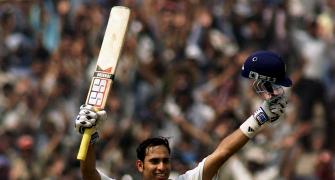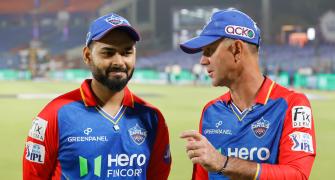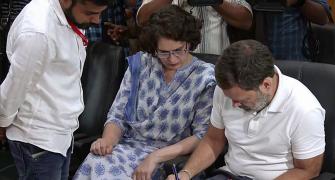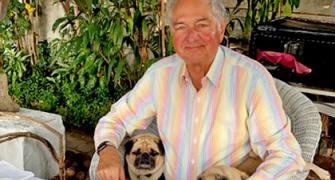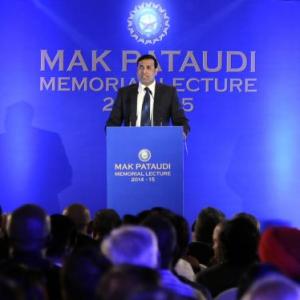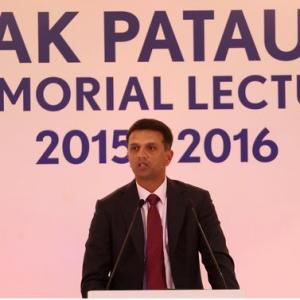'With his passing comes the end of Indian cricket history.'
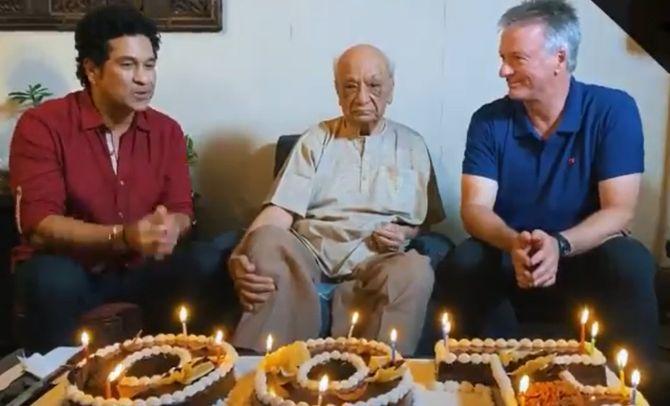
Vasant Raiji, who played the Ranji Trophy for Bombay and Baroda, was the oldest living first-class cricketer in India.
Mr Raiji passed into the ages at the age of 100 last month.
He wrote 12 books on cricket -- his first being Ranji - the Legend and the Man in 1963. Cricket Memories: Men and Matches of Bygone Days in 2010 was his final publication on a game he loved so dearly.
A chartered accountant by training, he was one of the founders of the Jolly Cricket Club in Mumbai, served as president of the CCI Legends Club and was also president of the Association of Cricket Statisticians of India..
"He would like to be remembered as a historian. The articulation and the formidable memory of anecdotes make Raiji a human from another planet. His book Ranji: A Centenary Album is not a book for the bookshelf, but for a museum collection. With his passing comes the end of Indian cricket history," former first-class cricket umpire Marcus Couto tells Norma Godinho/Rediff.com.
Couto struck up a friendship with Mr Raiji at the Cricket Club of India in Mumbai, the umpire's workplace.

"I knew Vasant Raiji for 37 years. For the last 30 years we would meet daily. He would regularly speak to me about cricketers of the past. He had a very good memory. He remembered details of all the old matches and he'd narrate them to me," says Couto.
"That got me interested in cricket history, and that is how I ended up writing a few books myself! Whatever cricketing history I know it is because of Vasant Raiji," adds Couto.
"Raiji played only a handful of first-class cricket matches, but he was never bitter. Instead, he was realistic about his cricketing skills."
"During his debut game for Bombay against Western India in 1941, Raiji and his team-mate Laxman Kenny were strictly instructed by Vijay Merchant to be cautious of getting run out, because Kenny and Raiji played local cricket for separate clubs in Bombay," recalls Couto.
"And that is exactly what happened. Raiji was run out first, followed by Kenny. Then Merchant himself got run out for 7 -- all this in the space of 20 runs. It was left to K C Ibrahim (230) to take the score to 462 runs. Bombay won the match on first innings."
Couto remembers Mr Raiji speaking about his second match for Bombay.
"In the next match in December 1941 against Sindh, Raiji was out cheaply, leg before for 20 runs, but he witnessed two fine innings -- Merchant (153) and G Kishenchand (131). Raiji told me, 'I was not selected for Bombay after that, but I have no regrets. Playing for Bombay was a matter of pride'," says Couto.
"Raiji then played for Baroda (he scored 68 and 53 in his first match for Baroda) because he qualified to play for the team because he was born there. His top scores for Baroda helped them win the Ranji title in the 1944-1945 season."
"'I played for Baroda not because of any bitterness towards Bombay. Bombay gave me a good chance to perform, but I failed and there was no chance I'd be recalled to the Bombay squad'," Couto remembers a conversation with Mr Raiji.
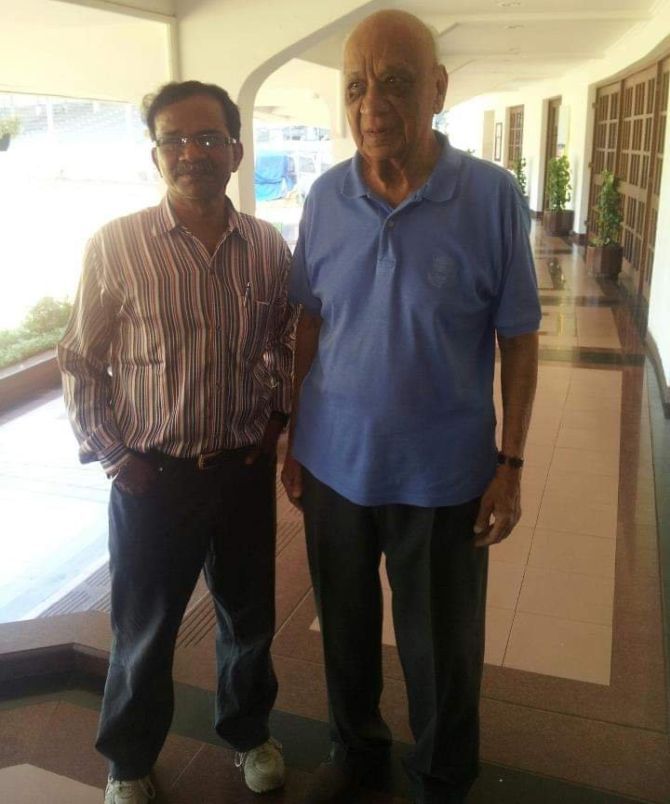
With his cricket career in decline, Mr Raiji commenced a second career as cricket historian, writing books on Ranji, Victor Trumper, K S Duleepsinhji, on whom authentic material was hard, if not impossible, to find.
The man who really grabbed Mr Raiji's interest was Colonel C K Nayudu.
"That Raiji was fond of (Sachin) Tendulkar we know," says Couto. "From the current batch he used to admire Virat Kohli, but whenever I asked him, and I asked him a few times, who is the all-time greatest Indian cricketer, Raiji would say C K Nayudu. It was Nayudu who got Test cricket status to India."
Couto remembers how Mr Raiji's eyes would light up when talking about C K Nayudu.
"On December 1, 1926, Raiji watched his first cricket match at the Bombay Gymkhana with his father. It was a match between the Hindus and the MCC. Nayudu, six feet tall, with a good athletic built, sharp eyes and strong wrists, had scored 153 -- he hit 11 sixes and 14 fours in that innings."
"That innings of 153 led to serious considerations for India's elevation to Test status. The then English captain Arthur Gilligan, having seen CK's performance, himself lobbied for India's Test status. India, eventually played its first Test match in 1932 under Nayudu's leadership."
Nayudu could bowl off breaks, leg breaks, outswingers and field at any position, outstandingly.
For Mr Raiji, the definition of a cricketer was 'someone having a bold approach and personality and not just scores', which is why he thought highly of Nayudu.
While Mr Raiji rated Nayudu as India's best, he thought Don Bradman was world class.
"Overall, he rated Don Bradman as No 1, the West Indies' George Headley as No 2 and Jack Hobbs of England as the three best batsmen of all time."
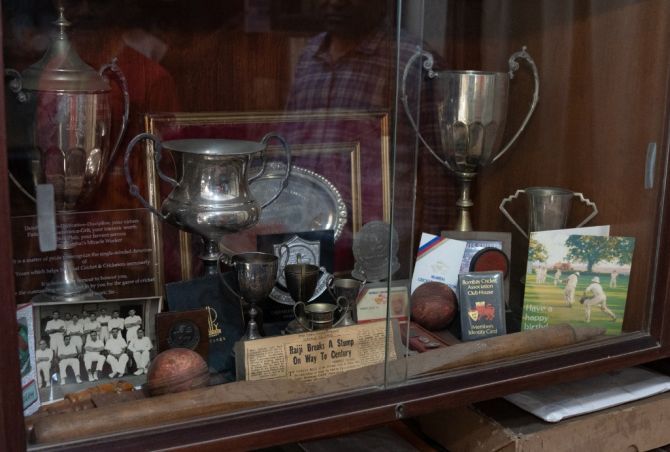
"Bradman wrote letters to Raiji regularly," reveals Couto. "Raiji would be amazed when Bradman would reply to his letters because in those days stamp charges would be very high and the great man would write back to Raiji from different countries."
"Raiji preserved seven letters from Bradman and a few years ago gifted them to his younger daughter Renuka, who now lives in Australia."
"In 1933, at the age of 13, Raiji watched India's inaugural Test at home against England at the Bombay Gymkhana. Lala Amarnath scored a century in that Test. Raiji remembered all the areas through which Amarnath hit boundaries in his innings of 118," says Couto.
"Raiji saw all the 18 Test matches played at the Brabourne Stadium, the last being India versus Sri Lanka (India won that Test by an innings and 24 runs) in December 2009," says Couto.
"Raiji also witnessed the Bombay Quadrangular (later the Pentagular) tournaments matches that were played between different communities -- Hindus, Muslims, Parsees, Europeans and The Rest from 1928 to 1946. Since very little was known about this tournament, Raiji later authored a book about this tournament -- All India Quadrangular and Pentangular," says Couto.
"In my opinion, it's one of his best books to learn about Indian cricket history."
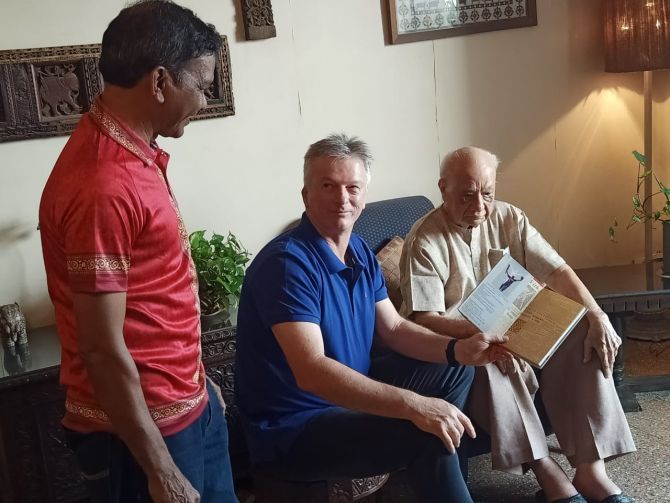
Mr Raiji also collected cricket memorabilia.
"In October 1956, in a Police Shield match, while scoring a century for CCI, Raiji played a full-blooded straight drive and the ball hit the middle stump, which broke into two. Those two pieces of the stump are still in his cupboard," says Couto.
"He also had at least 120 volumes of the Wisden Almanac, which he sold to a cricket library in Hyderabad in 2005. He wanted to donate it to CCI, but they already had them in their library. The Hyderabad Cricket Association wanted them."
"Raiji had 57 volumes of Indian Cricket. Indian Cricket was a cricket yearbook published by The Hindu from 1946-1947 to 2004. There was no 2003 issue and so there are 57 editions in all. During most of its run it was the principal annual of its kind in India. Raiji had all these volumes."
"Foreigners were ready to buy them from him. Christie's approached him with a huge auction figure for his books, but he refused and gave them to the library in Hyderabad. He wanted his collections to remain in India only," says Couto.
Couto once asked Mr Raiji why he wrote so many books on cricket. 'As an Indian and a follower of the game, it is my duty to collect authentic and interesting facts about the greatest cricketers India has ever produced', was Mr Raiji's reply.
Raiji's knowledge of cricket history was so well known, says Couto, that Australian cricketer Bill Ponsford's grand-daughter, Megan, a sports researcher, traveled to India to meet him to know more about Jack Ryder's team of 1935 that toured India.
It was an unofficial tour -- the Maharaja of Patiala paid 100,000 pounds for the Australians to come to India. The purpose? To assist the Indian team with its preparations to tour England in 1936.
Among Mr Raiji's favourite quotes, remembers Couto, was Don Bradman's observation: 'I don't know what divides the people of India into various religious groups, but I do know that they are all united in the love of the game.'

